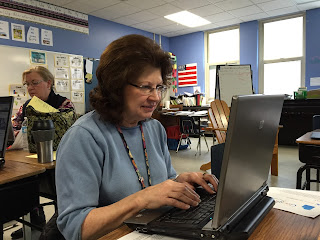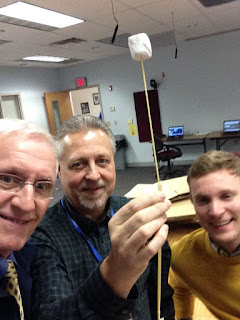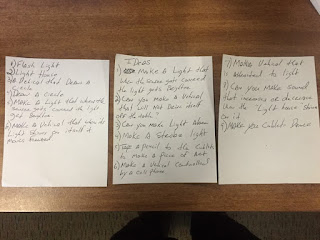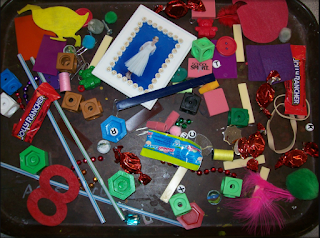
I'm a Facebook user. I love to look back at my memories from years past. Today one popped up and it was about a project I did in a school district. The year the project occurred was 2009 and I'm not sure the project had any educational benefits.
I think it's important for any educator to look back at lessons that they've done or projects and judge their value. If we as a Educators are lifelong learners, what we knew yesterday is not the same as what we know today. It is possible that what we taught was not a meaningful learning experience.
Here is a learning experience that after further review I feel as if it had very little educational value. I'm pointing the finger (index finger) at myself. In defense of this activity I was working in a rather low functioning special education classroom with students who were emerging readers and had more challenges than many other students their age.
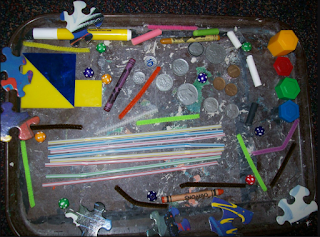
I created an "I spy" learning adventure. We borrowed brown trays from the cafeteria. We borrowed many objects from the art room and we included numbers, letters, blocks, pencils, pens, paperclips and a multitude of other objects. Some of the objects were just distractors. Other objects were somewhat educational. For example: The number eight, in this picture, was used to be an object so that other people could find it on a webpage. One's ability to identify a number is relatively important and slightly involves math.
Did this lesson fit the New York state standards for math or art? I'm sure I could find a way for it to somehow fit into the state standards. Regardless, I just feel that this activity has very little educational merit. On the blooms taxonomy I would say that this is very low level. It is just identifying and recall. I won't even talk about how this lesson would be impossible to differentiate for a person with a visual impairment. (By the way, assistive technology is on of my niches and an issue very important to me).
 I have a little rule. If you can Google the answer it's probably on the lower level of Blooms' taxonomy. The upper level of Blooms has to do with activities like design, create and teach. These upper level actives are not used today enough in modern K-12 education.
I have a little rule. If you can Google the answer it's probably on the lower level of Blooms' taxonomy. The upper level of Blooms has to do with activities like design, create and teach. These upper level actives are not used today enough in modern K-12 education.
My whole point of this blog post is not to criticize my past teaching and learning. It is more to be an example of having a growth mindset and being reflective. I think it's important for every educator to look at what they've done in the past and see if it was good. Was what you did last year something you should do again this year? Maybe, there is something that you've done every year that was, upon further reflection, of little educational value. If it is of little educational value, and we know teachers are asked to do more and more with less and less, is it possible that some of these "legacy activities" are taking away valuable learning time that could be used for more educationally significant activities. Even the artist sets aside the brush, takes a step back and asked his/her self "what needs to be done next and was what I did previously something I should keep doing." In many ways, teachers are artists.


